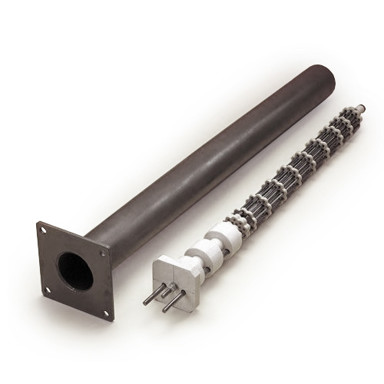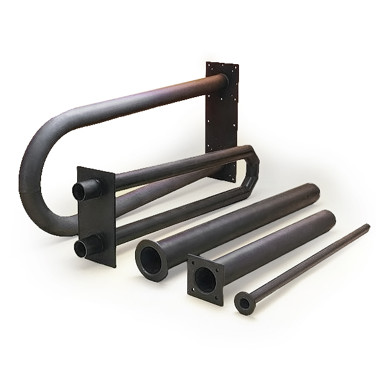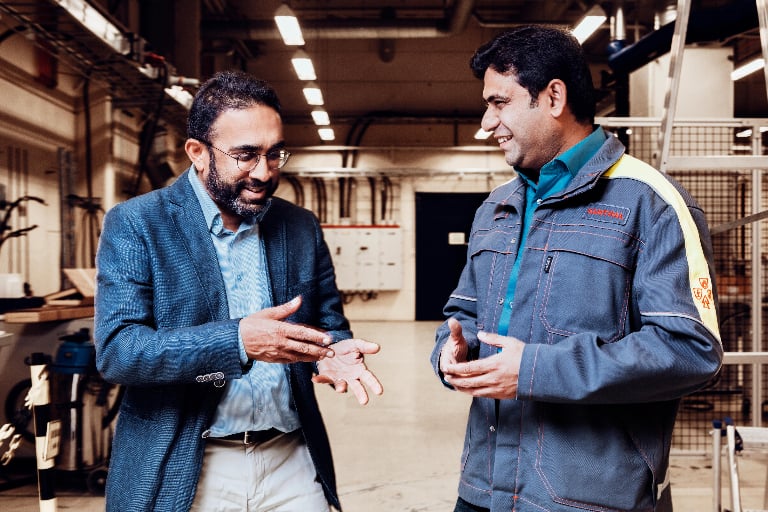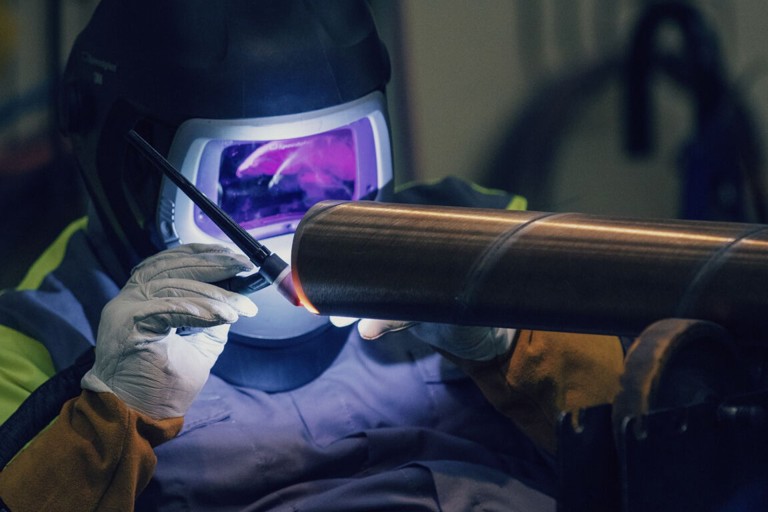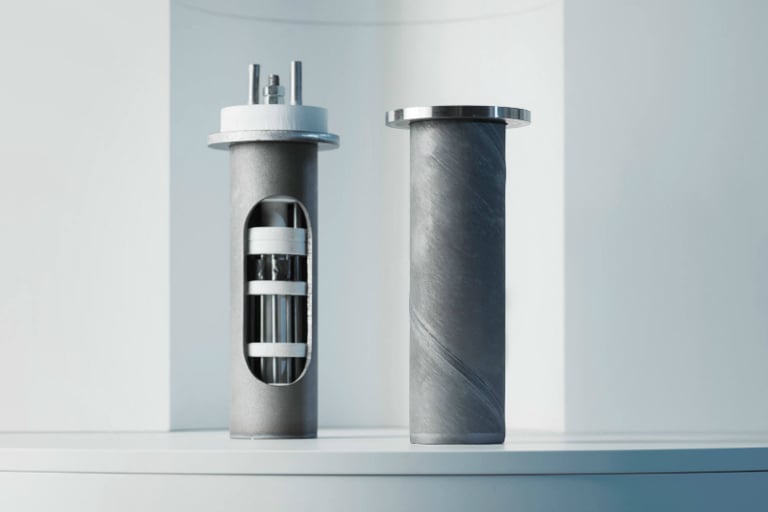Foam glass is produced using old glass bottles and containers, which are ground down into a powder and mixed with a foaming agent. The mixture is then heated up slowly in a roller furnace. As the glass melts, the foaming agent creates gas particles and the mixture forms into a spongelike structure – hence the name foam glass.
The foam process in brief
Foam glass is produced from recycled glass in the form of old bottles and containers, which are ground down into a powder. This is then mixed with a foaming agent before being heated up in a roller furnace. As the glass melts, the foaming agent creates gas particles and bubbles, and the mixture forms into a foamlike structure.
 Limin Liang, Business Developer, Kanthal
Limin Liang, Business Developer, Kanthal
“Because of its air bubbles, foam glass is a fantastic material for insulation, since air conducts the least amount of heat,” says Limin Liang, Business Developer at Kanthal. “The sponge structure gives the material its high strength while the air bubbles ensure it remains relatively light.”
For this reason, the industry is growing, and foam glass is currently used in a wide range of applications, from tube insulation on oil rigs as a form of fire protection, to safety barriers on airport runways. It is also used to insulate homes and buildings, and in road construction.
Reduce energy costs by wasting less heat
Since it is made from recycled glass, and often used to improve the energy efficiency of homes and buildings, foam glass can be seen to be contributing to improved sustainability on several fronts. However, the most common heating solution used in production furnaces – gas burners – offers poor thermal efficiency and can generate high volumes of CO2.
“Only about 30 percent of the heat generated actually gets used to heat the product – the rest gets sucked out of the chimney,” says Liang. “This means that if your furnace needs 100 kilowatts of power, you need to install a heating system that can deliver at least 350 kilowatts.”
Electric heating can deliver thermal efficiency of over 90 percent and result in energy savings of at least 30 percent.
However, electric heating can deliver thermal efficiency of over 90 percent and result in energy savings of at least 30 percent. Furthermore, if renewable energy is used to power the heaters, then CO2 emissions from production are reduced to virtually zero.
“For many manufacturers, switching to electric heating is a huge cost saver,” Liang says. “Not only are energy costs brought down, but they can also save on potential penalties for carbon emissions and eliminate any costs associated with gas transportation.”
A unique solution for longer life and easier maintenance
Kanthal’s unique solution for foam glass manufacturers is its Tubothal® heating element combined with its Kanthal® APM radiant tube. This means the element is never in contact with the furnace’s atmosphere, helping to extend its lifetime. It also means elements can be removed and replaced while the furnace is still in operation, which in turn reduces the costs of maintenance.
“While a gas burner itself is relatively simple, it requires a lot of extra components around it such as piping, valves, security systems and so on. Since you’re dealing with flammable gas, it is vital that there are no leaks. This means that a lot of maintenance work is required. However, with an electric heater you do not need any of this, so the maintenance requirements are much lower.”
Another unique advantage when using Kanthal® APM material is its higher resistance to furnace atmospheres and high carbon activity. A common issue with conventional nickel-chromium (Ni-Cr) tubes is that chromium oxide forms on the surface, which can spoil off and contaminate the product. However, with a Kanthal® APM tube, aluminum oxide forms instead, which is far more docile and will not spoil off.
Six benefits of Tubothal® heating element and Kanthal® APM radiant tubes for foam glass production
- Significant reduction in energy consumption: With thermal efficiency of over 90 percent, energy consumption is at least 30 percent less than with gas heaters.
- Zero CO2 emissions: When powered by renewable electricity, electric heating can eliminate all CO2 emissions from production.
- Excellent temperature uniformity: Compared with an open gas flame, electric heating offers far more control and precision, and can ensure even heat distribution across the whole product. This minimizes waste and increases productivity.
- Less maintenance, easier maintenance: With the heating elements inside Kanthal® APM tubes, they can be removed and replaced without having to shut down the furnace. Electric heaters also require far fewer auxiliary components than gas, which further reduces maintenance needs.
- Less contamination: Kanthal® APM tubes form a protective, highly docile aluminum oxide on the surface that will not spoil off. This is unlike nickel chromium tubes, which form chromium oxide on the surface when in use. Unlike nickel-chromium tubes, Kanthal® APM tubes do not form chromium oxide on the surface when in use. Instead, aluminum oxide forms, which is far more docile and will not spoil off.
- Extensive support and technical advice: Kanthal’s experienced technicians can offer furnace simulations to help calculate the potential energy savings and determine the optimal placements for heating elements. They can also offer technical advice and assistance with installation.
Connected products
Here you can find the Kanthal product offering
Read more
Our latest articles
